The Corvette Stingray Sports Car
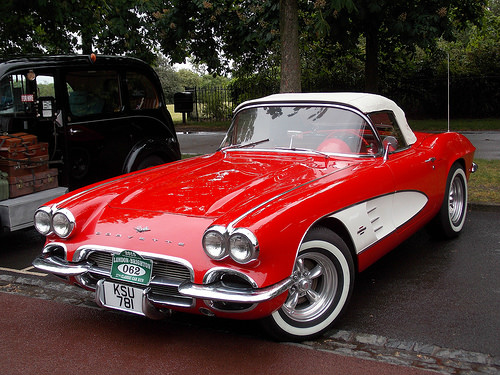
1961 Chevrolet Corvette Seen during the London to Brighton Classic Car Run 2015 Surely Corvette perfection?
from Classic to Modern
Corvette and Stingray On The Track
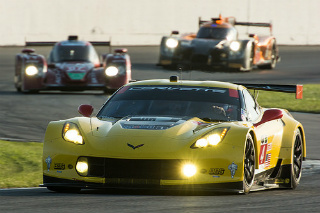
Corvette Racing's Corvette C7.R Followed by Mazda and Ligier, it was seen during the TUDOR United SportsCar Championship in Daytona 2015
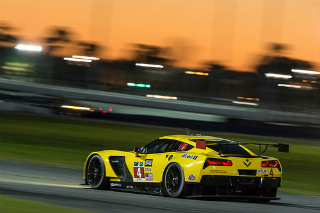
Chevrolet Corvette C7.R This Corvette Racing C7.R was spotted in the Rolex 24 during Daytona 2015. Love the colour. It had a class win in the 2015 Le Mans
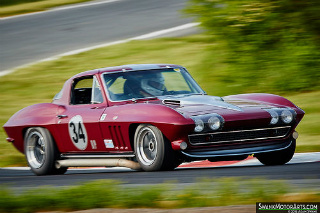
1966 Chevrolet Corvette This great action shot was taken with Alex Heckert at the wheel during a Sprint Race at the 2015 Jefferson 500
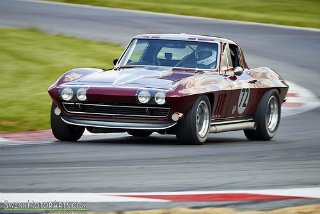
1966 Corvette Shot was taken during the 2014 Sprint Race for Group 2 at the Jefferson 500
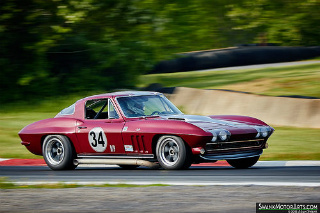
1966 Chevrolet Corvette An inspiring shot taken during the Sprint Race at the 2015 Jefferson 500
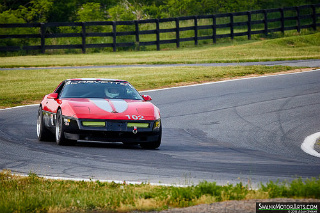
1985 Chevrolet Corvette C4 This action shot was taken during the 2015 Jefferson 500
The Early Corvette
The Corvette Stingray sports car. The first generation, referred to as C1, of the Chevrolet Corvette was produced in 1953.
It used a 150 bhp, 3.8 litre, straight 6-cylinder engine, with three Carter carburettors.
This was Chevrolet's first venture into the sports car market. The car was only available in white, with a black convertible top and red interior.
Unfortunately, it was not a success, and only 300 Corvettes were built that year.
After 1953, the following changes took place:
- 1954 - It remained unchanged, although other colours were offered
- 1955 - A 4.3 litre, V8 engine was available as an option
- 1957 - A redesigned body was introduced, together with a larger 4.6 litre, V8 engine
- 1958 - The body styling was slightly modified
- 1961 - The car's rear was redesigned
- 1962 - A larger 5.4 litre, V8 engine was offered in two versions: standard, developing 250 bhp, and fuel injected, developing 360 bhp.
This was the last model in the first generation of Corvettes.
Technical Data
Production: 1953 1955 1956 1957 1962
Engine: 3859 4344 4344
4638 5354
Cylinder, bhp 6, 150 8, 195 8, 210 8, 283 8, 360
Top Speed: mph 102 119 118 133 140
Time to 60 mph: secs 11.5 8.5 8.9 6.6 5.7
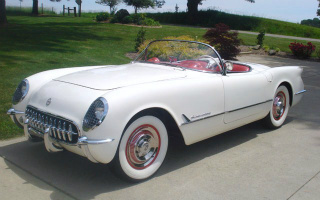
1953 Corvette Image
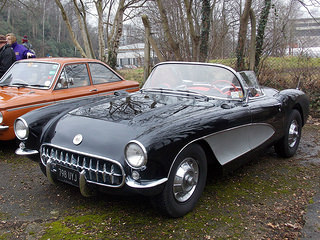
1957 Corvette Image
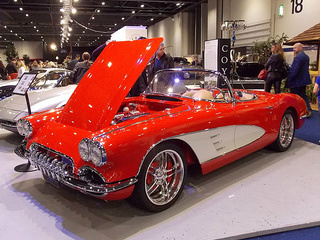
1959 Corvette Image
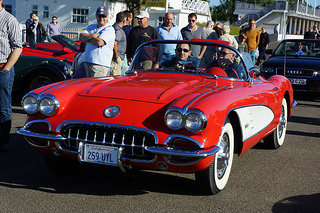
1959 Corvette
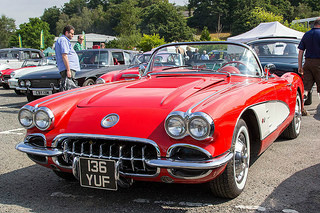
1959 Corvette
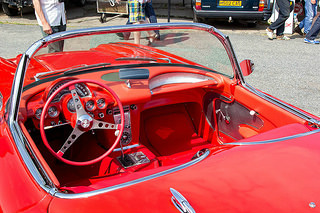
1959 Corvette
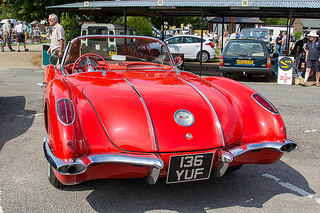
1959 Corvette
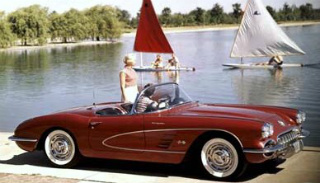
1960 Corvette Image
Full Size
The 1963 Stingray
The Corvette Stingray was first introduced in 1963, and represented the start of the second generation, called C2, of Chevrolet sports cars which continued until 1967.
The first Stingray was considerably different from the previous Corvette in so much as it was completely redesigned.
It was much lighter than its predecessors, and was available as a convertible as well as a fixed head coupe.
The body was fibreglass on a steel chassis. It had a split rear window, independent rear suspension, and used the same engine as the 1962 Corvette.
The Corvette Stingray sports car was an immediate success. Production that year consisted of 10,919 convertibles and 10,594 fixed head coupes.
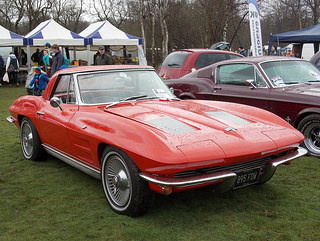
1963 Corvette Stingray x 2
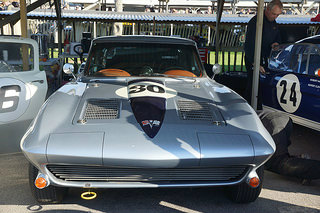
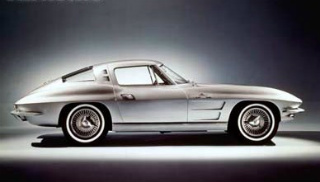
another 1963 Corvette Stingray Image
Full Size
The 1964 Stingray
The 1964 Corvette Stingray sports car displayed only minor changes over the '63 model.
However, the 5.3 litre (327 cu in) V8 engine now had a high lift camshaft, and used a 4-barrel Holley carburettor instead of the previous Carter.
This produced 365 bhp, which was increased to 375 bhp with the use of Rochester fuel injection.
Production that year consisted of 13,925 convertibles and 8,304 fixed head coupes.
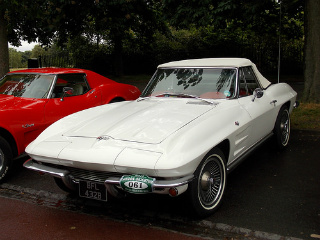
1964 Corvette Sting Ray This beauty was pictured whilst on the 2015 London-Brighton Classic Car Run
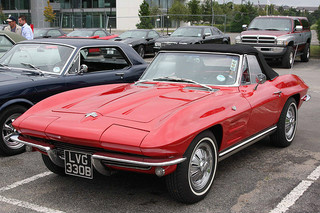
4 x 1964 Corvette Stingray Image
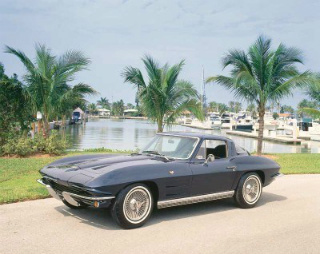
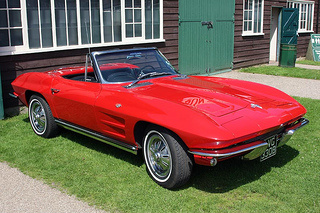
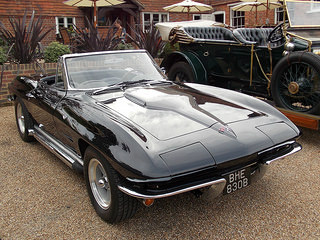
Full Size
The 1965 Stingray
The 1965 sports car had disc brakes on all wheels for the first time.
However, the main feature of the '65 model was the increase in size of the engine from 5.3 litre to 6.5 litre (396 cu in).
Since the output of 425 bhp using Holley 4-barrel carburettors was greater than the 375 bhp developed using Rochester fuel injection, then the latter was dropped in mid year.
It would not be for another 18 years before fuel injection was reinstated.
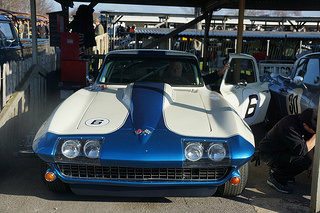
1965 Corvette Sting Ray Image
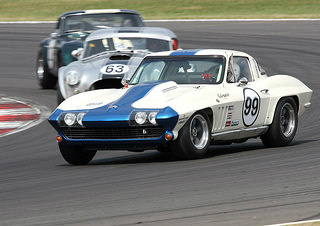
1965 Corvette Stingray Image
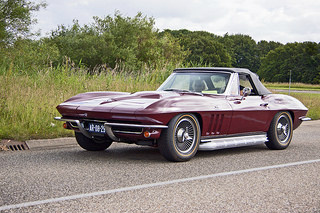
1965 Corvette Sting Ray Convertible
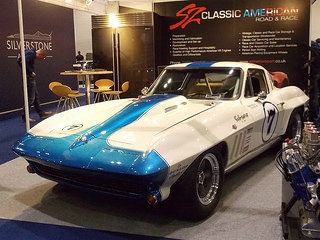
1965 Corvette Sting Ray Image
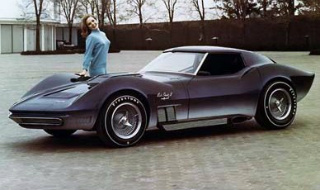
1965 Mako Shark 2 Image
Full Size Full Size
The 1966 Stingray
The 1966 Stingray sports car continued to use the big block, 7 litre (427 cu in), V8 engine, of which there were two options: 390 bhp and 425 bhp units, the latter using a larger Holley 4-barrel carburettor.
There was mild restyling of the front section of the '66 model.
The optional L-88 engine, a version built purely for racing, produced a phenomenal 530 bhp.
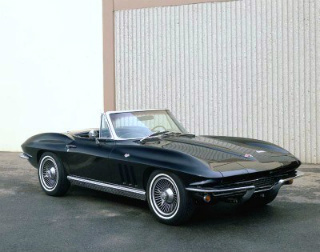
1966 Corvette Stingray Image
Full Size Full Size
The 1967 Stingray
The 1967 Corvette Stingray sports car was to be the last member of the C2 generation. With five years of refinements to its name, it was regarded as being the finest model so far.
The 7 litre (427 cu in), V8 unit was given the Holley triple, 2-barrel carburettor as standard, developing 434 bhp.
However, what was regarded as the ultimate engine for the '67 Stingray was the L-88 option.
This had lightweight heads and larger ports, a modified camshaft, a massive 12.5:1 compression ratio, and a huge, single, Holley 4-barrel carburettor.
This veritable beast developed 530 bhp. In 1967, only 20 customers purchased a Stingray with the L-88 option.
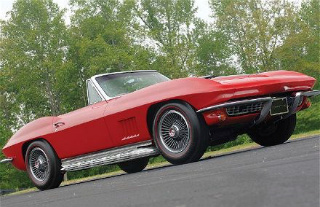
1967 Corvette Sting Ray Image
Technical Data Production: 1964 1965 1966 1967 1967
Engine: cc 5354 6489 6996 6996 6996
Cylinder, bhp 8, 375 8, 425 8,
425 8, 434 8, 530
Top Speed: mph 141 131 137 141 131
Time to 60 mph: secs 5.8 5.5 5.1 5.0 4.1
Regardless of these changes, sales in 1967 dipped to 22,940 units (8,504 coupes and 14,436 convertibles).
Since the C2 generation had really run its course, a redesign was overdue. Chevrolet was ready to launch the C3 generation of the Stingray in 1968.
The motoring press was almost unanimous in its acclaim for the Corvette Stingray.
In 2004, Sports Car International cited the Stingray as number five in their list of Top Classic Cars of the 1960's.
Full Size Full Size
The 1968 Stingray
Chevrolet launched the C3 generation of the Corvette Stingray sports car in 1968 which was based on the Mako Shark 2 design of 1965. There was a complete restyling of the body and interior of both the coupe and convertible. Both the rear window and roof panel of the coupe were now removable, whilst the convertible had an optional hardtop. Side vent windows were replaced by a fresh air circulation system. All round independent suspension, four wheel disc brakes, and three or four speed gearboxes were retained. Three speed automatic transmission was now optional.
There was a wide range of engines including: 300 and 350 bhp 327 units, plus 427 units with 390, 400, 430 and 435 bhp.
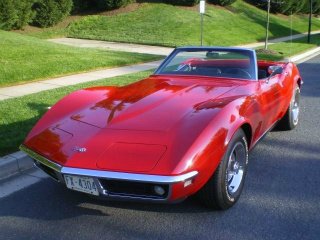
1968 Corvette Stingray Image
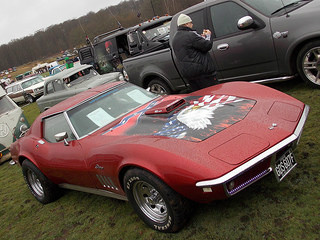
1968 Chevrolet Corvette Stingray Image
The 1969 Stingray
In 1969, the small block engine's capacity was increased from 327 ci (5.4 litre) to 350 ci (5.7 litre), although output remained unchanged. Changes included wider 8 inch steel wheels, the exterior door handles were redesigned, headlight washers, black front grille, and side exhaust was an option. Coupes with detachable roof panels began to outsell the convertible. There was an optional big block 427 ci (7 litre) engine that developed 430 bhp.
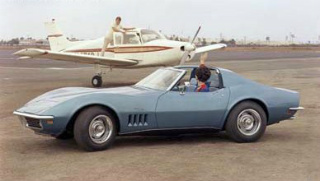
1969 Corvette Stingray Image
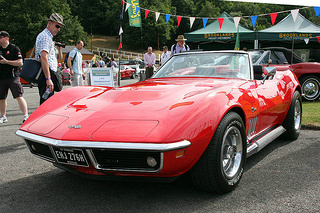
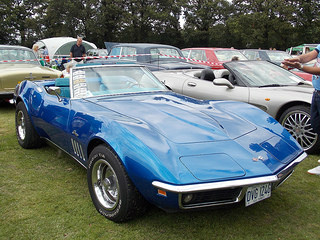
1969 Corvette Stingray Image
1969 Stingray C3
1969 Stingray C3 This beast was one of the stars of the show
The 1970 Stingray
In 1970, some of the sports car changes included: flared wings, new egg-crate grille, the round double exhaust was enlarged and made rectangular, redesigned seats, tinted glass, and a four speed gearbox was now standard equipment.
Output from the standard 350 ci (5.7 litre) engine remained at 300 bhp. Also available was the new 350 ci small block V8 engine which developed 370 bhp which could cover a standing quarter mile in 14.4 secs. A popular choice was the 454 ci (7.4 litre) V8 engine that developed 390 bhp, and produced a top speed of 133 mph and 0-60 mph in 5.3 secs.
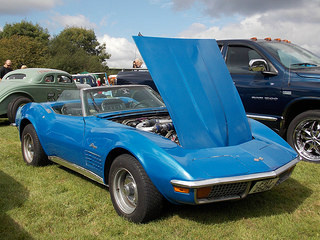
1970 Chevrolet Corvette Stingray
Full Size
The 1971 Stingray
In 1971, there were no changes to the external appearance throughout the car, but the main feature was the addition of air conditioning for the first time. The headlight washer system would be discontinued at the end of the year.
To take account of low octane petrol, compression ratios were reduced which lowered engine output. The standard 350 ci (5.7 litre) output was now 270 bhp. For one year only, the 454 ci (7.4 litre) big block engine was available, which developed 365 bhp, and was offered with automatic transmission. It produced a top speed of 116 mph and 0-60 mph in 5.6 secs.
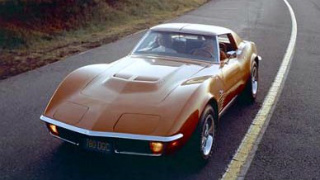
1971 Corvette Stingray Image
Full Size
The 1972 Stingray
In 1972, front and back chrome bumpers were discontinued the following year, as was the Coupe's detachable rear window. The key operated anti-theft alarm feature was now standard equipment. Automatic transmission had now become a popular addition with over 50% of cars being fitted.
A new method of measuring an engine's output was introduced which displayed more realistic, but lower, values. Hence, the basic 350 ci (5.7 litre) unit was now 200 bhp from 270 bhp. The 454 ci (7.4 litre) big block V8 engine was still available and developed 270 bhp.
By now, the Coupe variant was by far the more popular, with the convertible steadily falling out of favour.
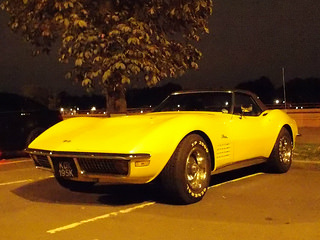
1972 Corvette Stingray
The 1973 Stingray
In 1973, the Stingray was no longer to be marketed as purely a muscle car, but as a touring sports car instead. One of the new features was that sound levels within the car were dramatically reduced. Due to the new US safety regulations, the chrome rear bumper was continued, but the front chrome bumper was replaced with a new polyurethane version, which added 35 pounds to the front of the car.
The standard 350 ci (5.7 litre) small block engine now produced 190 bhp, but there was an optional 350 ci high performance unit that developed 250 bhp which was designed to come into its own at higher revs. There was also the 454 ci (7.4 litre) big block V8 engine that produced 275 bhp.
A new feature drew in air into the car from the rear, when under full throttle, so increasing engine output whilst keeping the engine compartment cooler. However, the downside to this was that 0-60 time was reduced by one second.
1973 C3 Corvette Stingray By now, the Stingray was marketed as a touring sports car rather than a muscle car. But this didn't detract from this imposing example. Presented in white, it really stood out
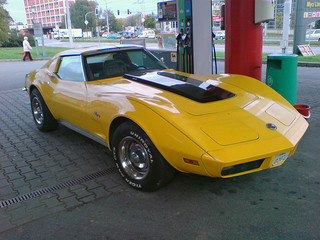
1973 Corvette Stingray Image
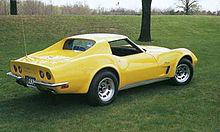
1973 Corvette Stingray Image
The 1974 Stingray
In 1974, a new polyurethane rear bumper system was introduced with an integral license place holder and taillight recesses, but which required the exhaust tailpipes to be deflected downwards.
Powered by the 350 ci (5.7 litre) small block engine that developed 195 bhp, a '74 Stingray could reach 60 mph in 6.8 secs. Alternatively, the 454 ci (7.4 litre) big block V8 engine developed 270 bhp, with 0-60 mph in 6.4 secs.
Interior noise was reduced still further by the addition of resonators to the dual exhaust system. 1974 saw the end of a dual exhaust system without a catalytic converter and the final availability of the 454 ci big block V8 engine.
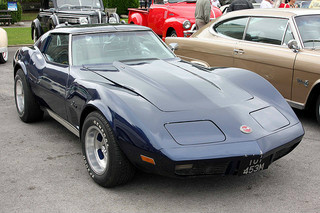
1974 Corvette Stingray Image
The 1975 Stingray
In 1975, electronic ignition and a catalytic converter were fitted, and the polyurethane rear bumper was now a single unit. The 350 ci (5.7 litre) basic engine's output fell to 165 bhp but still produced 0-60 in 7.7 secs. On the other hand, the optional 454 ci (7.4 litre) big block V8 unit now developed only 205 bhp and produced a top speed of 125 mph and 0-60 in 7.0 secs. There were no larger engines available.
Since only 12% of Stingray sports cars were sold as convertibles plus further safety regulations on the horizon, then this variant would be discontinued at the end of the year, and it would not be until 1986 that the convertible returned.
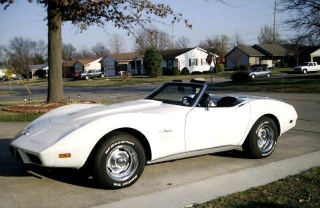
1975 Corvette Stingray Image
Full Size
The 1976 Stingray
In 1976, the fibreglass floor panel was replaced by a steel unit to shield the catalytic converter exhaust. Output from both the 350 ci (5.7 litre) basic unit and the optional 454 ci (7.4 litre) big block V8 engine increased to 210 bhp, with both producing 0-60 mph in 6.8 secs when using a four speed gearbox.
To further reduce cabin noise, outside air from the front of the car was ducted over the radiator so reducing windscreen turbulence. Aluminium wheels were now available. The steering wheel was changed, an unpopular move.
Interestingly, even though there was now no convertible variant, sales rose to a new record.
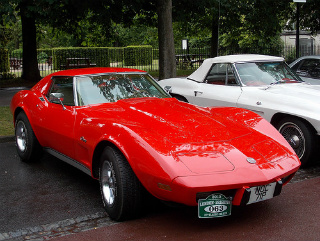
1976 Corvette Stingray Parked next to an earlier variant, this uprated 210 bhp model sprinted to 60 mph in 6.8 secs
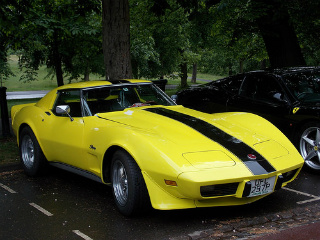
1976 C3 Corvette Stingray Wow! This yellow peril was noticed during the 2015 London to Brighton Kit & Sports Car Run
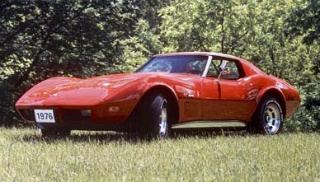
1976 Corvette Stingray Image
The 1977 Stingray
In 1977, the steering column was moved 2 inches towards the dashboard to allow for a racing style for the driver. Leather trim was now standard, and the sun visors were redesigned to reduce glare. A more user-friendly steering wheel was introduced.
To emphasise its role as a touring sports car, power assisted brakes and steering became standard, whilst cruise control became optional on cars with automatic transmission. Black exterior paint was reintroduced, but the dished roof-line was to be discontinued.
The output from both the 350 ci basic engine and the optional 454 ci V8 remained unchanged. Between 1953 and 1977, a total of 500,000 Corvettes had been built.
1977 C3 Corvette Stingray An imposing sight spotted resting under the trees
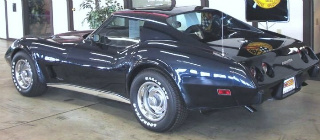
1977 Corvette Stingray Image
1977 C3 Corvette Stingray Showing the sweeping lines of this gorgeous classic
The 1978 Stingray
In 1978, the most obvious styling change was the introduction of a new fastback rear window which increased the available luggage space behind the seats, whilst improving rear visibility. A glove box was now added, whilst options included powered door locks and antenna, delayed wipers, floor matting, a larger fuel tank, and a CB radio.
The basic 350 ci engine developed 185 bhp, with a top speed of 123 mph and 0-60 mph in 7.8 secs, and produced a much smoother ride with less rattles. Furthermore, the optional 454 ci V8 unit's output had increased to 220 bhp, with a top speed of 127 mph and 0-60 mph in 6.6 secs, and a standing quarter mile in 15.3 secs. Both engines benefited from improved air intake.
To commemorate the Corvette's 25th anniversary, options included two tone paint, aluminium wheels, and sport exterior mirrors. Indy-500 replica pace cars were produced with black/silver two tone paint.
1978 Corvete Stingray C3 The '78 model was fitted with a new fastback rear window which increased available luggage space behind the seats. This imposing shot was taken at a local Classic Car Show. Delicious

1978 Corvette Stingray The colour and detail of this C3 makes it really stand out. Nice!
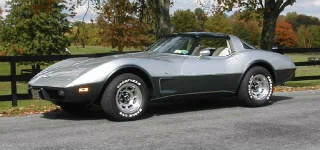
1978 Corvette Stingray Image
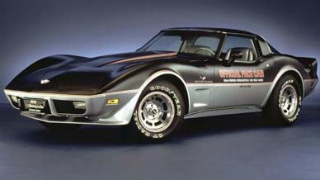
1978 Corvette Pace Car Replica Image
The 1979 Stingray
In 1979, features included new bucket sets with high backs, a bolt-on front and rear spoiler which reduced drag by 15%, and a glass paneled roof, which turned out to be very popular. Halogen headlights and an AM-FM radio became standard.
An open flow exhaust system and improved air intake increased output on the base 350 ci engine to 195 bhp and to 225 bhp on the optional 454 ci V8 unit. A wide ratio four speed gearbox was now available. It is interesting to note that, in 1968, 80% of all Stingrays were fitted with a manual gearbox, whilst in 1979, this figure had fallen to 20%.
1979 represented an all time peak in popularity of the Stingray sports car with production reaching a max of 53,807 units, a figure that has yet to be beaten.
The 1980 Stingray
In 1980, the front and rear bumpers were restyled, as was the bonnet, but it marked the end of the 454 ci big block V8 engine. Air conditioning was now standard, as was the telescopic steering column, and powered windows. Weight-saving features included an aluminium differential and intake manifold.
Owing to even stricter emission laws in California, these cars only were fitted with a 305 ci (5.0 litre) V8 engine that developed 180 bhp linked to automatic transmission and Chevrolet's engine management system.
On the other hand, every other state received the standard 350 ci (5.7 litre) engine which developed 190 bhp.
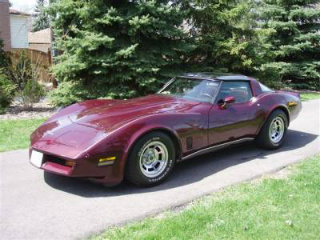
1980 Corvette Stingray Image
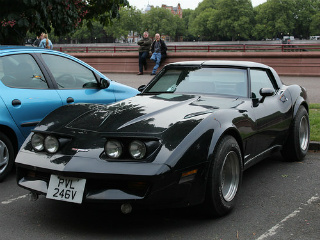
1980 Corvette Stingray Seen in Chelsea. It looks really sinister and imposing
The 1981 Stingray
In 1981, the only engine that was available was the 350 ci (5.7 litre) unit that developed 190 bhp, was offered with manual or automatic transmission, and produced a 0-60 mph time of 8.1 secs. The stainless steel exhaust manifold and engine management system introduced in 1980 on the 305 ci (5.0 litre) Californian engines now became standard, as was an engine electric cooling fan.
Optional items included aluminium wheels, a power adjustable driver's set, and powered external mirrors. When production moved from Missouri to Kentucky, a number of two tone paint options became available.
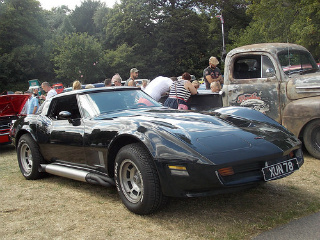
1981 Chevrolet Corvette Amusing how that old lorry created more interest than the sexy black Stingray next to it. There's no accounting for taste!
The 1982 Stingray
In 1982, cross fire injection was a new fuel injection system linked to Chevrolet's engine management system. The only engine now available, the 350 ci small block, developed 200 bhp, with 0-60 mph in 7.9 secs, a standing 1/4 mile in 16.1 secs, and a top speed of 124 mph. It was linked to a new four speed automatic transmission, which had lower first two gears for better acceleration, plus a fourth gear overdrive.
Since this was the final model in the C3 generation of Corvette sports cars, Chevrolet commemorated it by offering a Collector Edition Corvette with alternative serial numbers, silver-beige paint, special wheels, and a rear hatch window that could be opened.
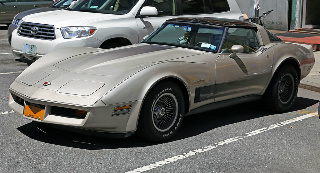
1982 Corvette Stingray Collector Edition Image
Full Size
BEYOND C3
The Corvette C4
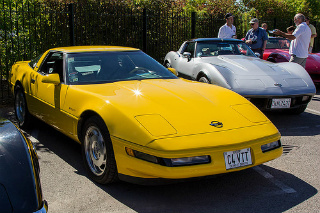
1995 Chevrolet Corvette This smart 1984-96 C4 variant could not resist the charms of the 1978 C3 sneaking in to raise the standing of the shot to the next level. Nice. Seen here at the 2015 Brooklands American Day
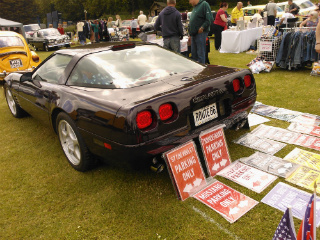
1991 ZR1 C4 Corvette Stingray This 1990-95 coupe used a 375 bhp, 5.7 litre V8 engine had a top of 180 mph, with 0-60 in 4.4 secs. Seen here as a novel display in a classic car show. Sexy in black
The Corvette C6 ZR1
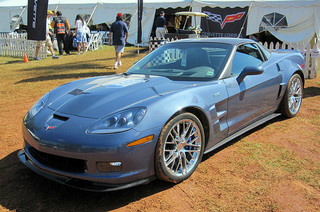
The Corvette C7
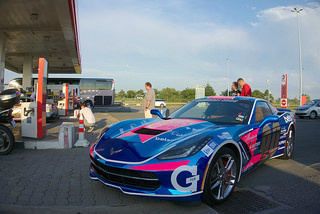
see All My Reviews
.
Corvette Stingray
Got any stories about Your Favourite Corvette Sports Car?
SPORTS CAR LINKS

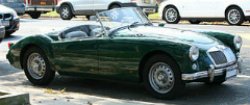



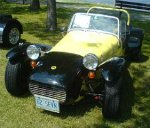



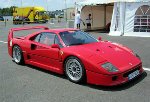
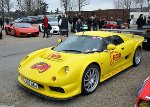



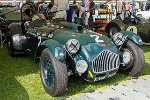
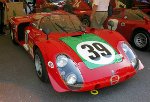


SPORTS CAR LINKS END
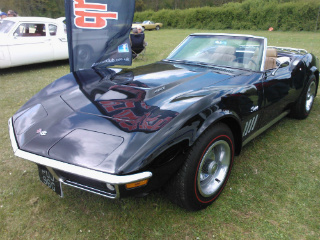
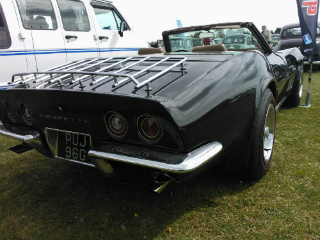
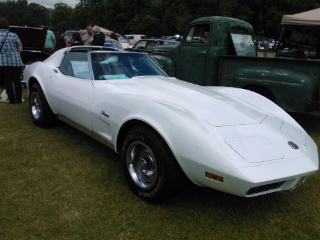
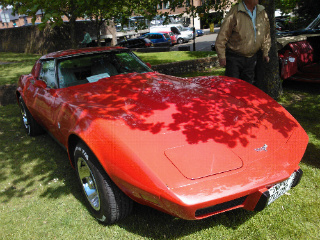
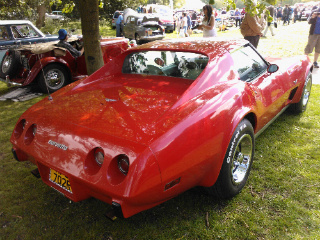
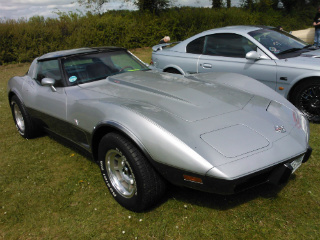






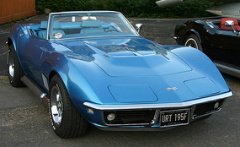
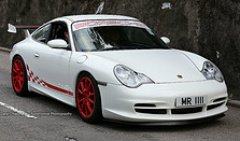
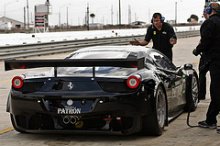
New! Comments
Have your say about what you just read! Leave me a comment in the box below.